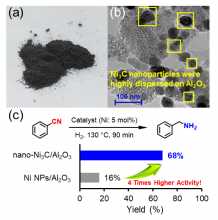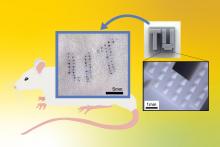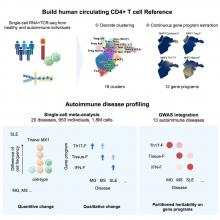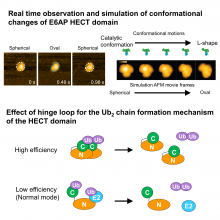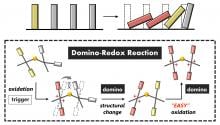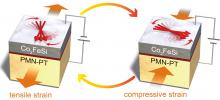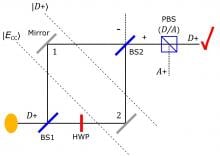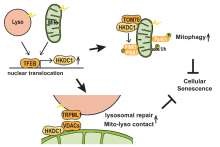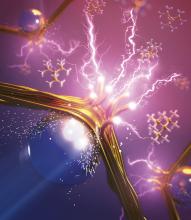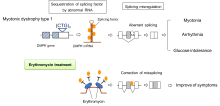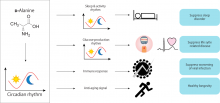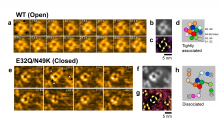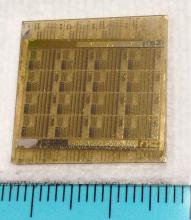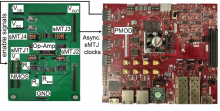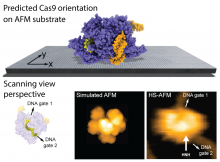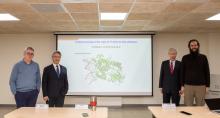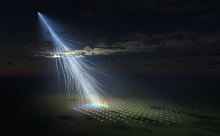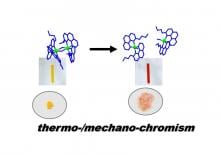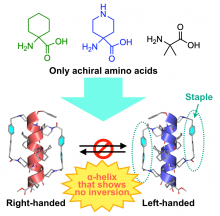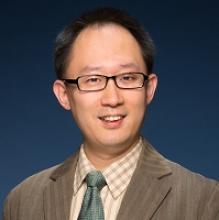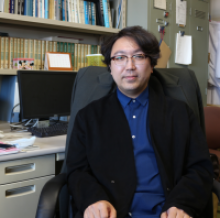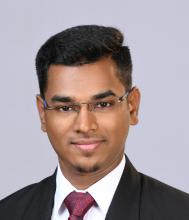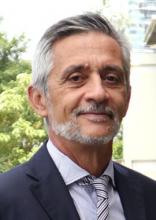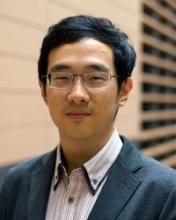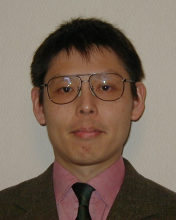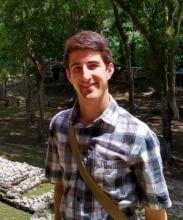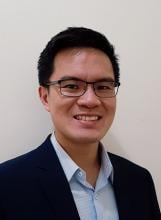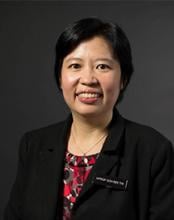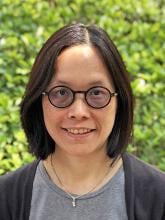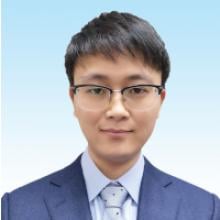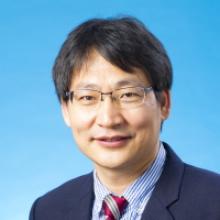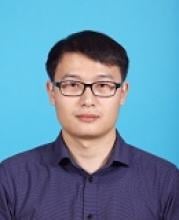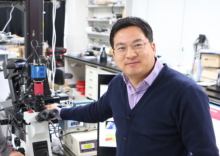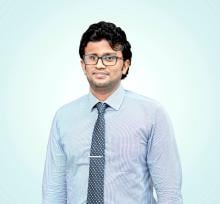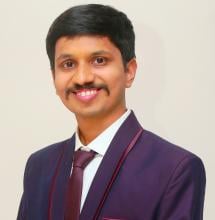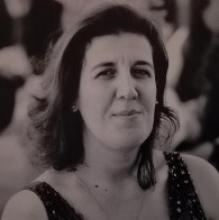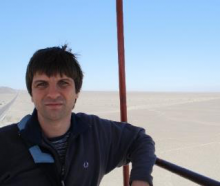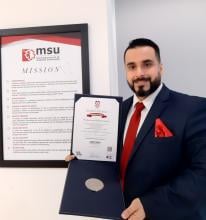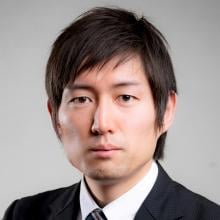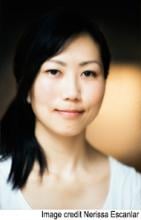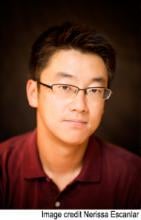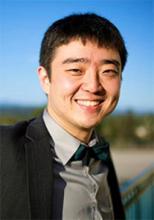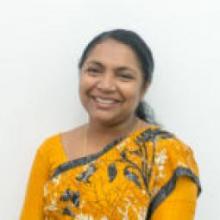Science
News
15 Jan 2024
Researchers from Osaka University and collaborating partners have helped minimize the cost of an important class of chemical transformations: converting nitriles into primary amines. Their experimental protocol uses a cheap nickel catalyst instead of an expensive noble metal, is convenient to conduct, and works for a broad range of starting materials. This work is an important advance in sustainable chemistry that might help lower the cost of producing nylon and many other everyday products.
11 Jan 2024
Researchers at the Institute of Industrial Science, The University of Tokyo create customizable polymer molds to produce cost-effective arrays of microneedles that can be used to uniquely identify pets with alphanumeric symbols instead of tags or collars.
11 Jan 2024
Researchers from Osaka University found that CD4+ T cells can be classified into 18 categories and 12 distinct gene programs, and that characteristic changes in CD4+ T cell profiles are associated with autoimmune disease, sex, and aging. Analysis of these distinctive immune cell profiles could be used to predict autoimmune disease in the future, paving the way for precision medicine.
11 Jan 2024
Researchers at Nano Life Science Institute (WPI-NanoLSI), Kanazawa University report in Nano Letters how the flexibility of a protein hinge plays a crucial role in the transfer of proteins in key cell processes.
11 Jan 2024
Researchers from SANKEN (The Institute of Scientific and Industrial Research), at Osaka University, Shizuoka Institute of Science & Technology, and collaborating partners have resolved a problem that has limited the environmental sustainability of peracid synthesis. By judicious choice of the solvent and light input, approximately room-temperature autoxidation of aldehydes proceeds in a manner that results in industrially useful peracids or carboxylic acids. This work is an important advance in green chemistry that will help minimize the carbon footprint of the chemical industry.
09 Jan 2024
Transmitting an effect known as a domino reaction using redox chemistry has been achieved for the first time.
09 Jan 2024
A research team from Osaka University, The University of Tokyo, and Tokyo Institute of Technology revealed the microscopic origin of the large magnetoelectric effect in interfacial multiferroics composed of the ferromagnetic Co2FeSi Heusler alloy and the piezoelectric material. They observed element-specific changes in the orbital magnetic moments in the interfacial multiferroic material using an X-ray Magnetic Circular Dichroism (XMCD) measurement under the application of an electric field, and they showed the change contributes to the large magnetoelectric effect. The findings provide guidelines for designing materials with a large magnetoelectric effect, and it will be useful in developing new information writing technology that consumes less power in spintronic memory devices. The research results will be shown in an article, “Strain-induced specific orbital control in a Heusler alloy-based interfacial multiferroics” published in NPG Asia Materials.
09 Jan 2024
Researchers from Osaka University and collaborating partners have, via reductive amination, resolved a problem that has limited the applicability of carboxylic acids to alkylamine production. Their experimental protocol is environmentally sustainable, simple and convenient to conduct, and works for a broad range of starting materials. This work is an important advance in green chemistry that might help minimize the environmental footprint of synthesizing a class of molecule that's used to manufacture many everyday products.
05 Jan 2024
What actually happens is much weirder, and may help us understand more about quantum mechanics
01 Jan 2024
Researchers from Osaka University have shown that a protein called HKDC1 is a new target of another protein, TFEB, and plays key roles in maintaining the stability of both mitochondria and lysosomes. HKDC1 is essential for mitophagy to remove damaged mitochondria, and mediates mitochondria–lysosome contact, which is critical for lysosomal repair. The role of HKDC1 in maintaining the stability of these organelles counteracts cellular senescence, revealing HKDC1 as a potential therapeutic target for age-related diseases.
29 Dec 2023
Asia Research News monitors the latest research news in Asia. Some highlights that caught our attention this week are a dragon-like robot that can fight fires, how having a pet can avoid cognitive decline, and how an illusion can help us learn motor skills.
25 Dec 2023
Researchers employ common plastics to kickstart radical chain reactions, creating a way to reuse plastic waste while improving process safety and efficiency.
21 Dec 2023
A team of researchers has developed an innovative method to design complicated all-α proteins, characterized by their non-uniformly arranged α-helices as seen in hemoglobin. Employing their novel approach, the team successfully created five unique all-α protein structures, each distinguished by their complicated arrangements of α-helices. This capability holds immense potential in designing functional proteins.
21 Dec 2023
In a phase 2 trial, researchers from Osaka University have found that erythromycin, a commonly used antibiotic, has acceptable safety and tolerability profiles in patients with myotonic dystrophy type 1. This common form of muscular dystrophy currently has no cure, and the research team is hopeful that phase 2b and 3 trials will further reveal the efficacy of erythromycin as a treatment—at least in some patients.
21 Dec 2023
Researchers from Osaka University have shown that the rare D-form of the amino acid alanine shows a clear circadian rhythm, and is able to affect the circadian clock and regulate gluconeogenesis, a method of glucose release, in the kidney. D-alanine upregulates genes linked to both gluconeogenesis and the circadian rhythm through the circadian transcriptional network. D-alanine is linked to many metabolic and immunological diseases, and this mechanistic insight could potentially lead to novel therapeutic approaches.
20 Dec 2023
Researchers at Nano Life Science Institute (WPI-NanoLSI), Kanazawa University report in Nature Communications a high-speed atomic force microscopy study of the structural dynamics of sodium ion channels in cell membranes. The findings provide insights into the mechanism behind the generation of cell-membrane action potentials.
19 Dec 2023
A research team at Osaka Metropolitan University has fabricated a gallium nitride (GaN) transistor using diamond, which of all natural materials has the highest thermal conductivity on earth, as a substrate, and they succeeded in increasing heat dissipation by more than two times compared with conventional transistors. The transistor is expected to be useful not only in the fields of 5G communication base stations, weather radar, and satellite communications, but also in microwave heating and plasma processing.
18 Dec 2023
Researchers identify RBFox1 as a key intrinsic regulator of heart muscle cell maturation, overcoming a major limitation in cardiac regenerative therapy and disease modelling and demonstrating for the first time that RNA splicing control can significantly impact this process.
15 Dec 2023
A new study have compared the reinforcing efficiency of pineapple leaf fiber (PALF) and cultivated flax fiber in poly(butylene succinate) composites. PALF, a less explored but potentially sustainable alternative, outperformed flax at 20 wt.%, showcasing its potential in high-performance bio-composites and aligning with environmental goals.
13 Dec 2023
Researchers at Tohoku University and the University of California, Santa Barbara have shown a proof-of-concept of an energy-efficient computer compatible with current AI.
13 Dec 2023
"Amaterasu" particle: a new cosmic mystery, Geckos inspire robotic device, Targeting cancer while protecting healthy cells, Honey, I shrunk the bear, Two species lost to science spotted again. Plus New Science Communication Resources. Read all in the latest Editor's Choice.
13 Dec 2023
Scientists at Osaka Metropolitan University have developed an efficient, non-invasive, and pain-free method to generate canine-induced pluripotent stem cells (iPSCs). They identified six reprogramming genes that can boost canine iPSC generation by 120 times compared to conventional methods using fibroblasts. The iPSCs were created from urine-derived cells without the need for feeder cells, an impossible feat until now. Their findings are expected to advance regenerative medicine and genetic disease research in veterinary medicine.
08 Dec 2023
Researchers at Kanazawa University report in Frontiers in Molecular Biosciences a computational method to predict the placement of proteins on AFM substrates based on electrostatic interactions.
04 Dec 2023
TAIPEI, TAIWAN──For the first time, it is possible to follow, step-by-step and with atomic resolution, what happens when the enzyme DNA photolyase repairs ultraviolet light-induced DNA damage. An international team of researchers led by Academia Sinica, Taiwan, has taken snapshots of the repair process with extremely high time resolution and combined them into a film sequence. The research was published in the scientific journal Science on December 1, 2023.
30 Nov 2023
A new bacterial species discovered at the deep-sea hydrothermal vent site ‘Crab Spa’ provides a deeper understanding of bacterial evolution.
29 Nov 2023
Researchers at Kanazawa University report in Science Advances how they can accelerate and decelerate chirality inversion in large cage molecules using alkali metal ion binding.
22 Nov 2023
Osaka Metropolitan University researchers and their colleagues have successfully detected an ultra-high-energy cosmic ray with an energy level comparable to the most energetic cosmic ray ever observed. The cosmic ray is set to be named after the Japanese sun goddess, Amaterasu. No promising astronomical object has been identified in the direction from which this cosmic ray originated, implying the potential existence of unknown astronomical phenomena and novel physical origins beyond the Standard Model.
20 Nov 2023
This paper highlights the underexplored potential of chiral self-sorting in the design of switchable and metastable discrete supramolecular structures.
17 Nov 2023
Researchers at Kanazawa University report in Nature Communications how they can control chirality inversion in α helical peptides.
16 Nov 2023
… all while discovering how the Universe evolved, how galaxies form and where the elements come from.
Events

09 Aug 2017
Pharma+Bio Asia 2017 brings together specialized workshop series for pharmaceutical, nutraceutical, cosmeceutical, biotechnology professionals & students

09 Oct 2017
Join Oxford Global for the Genomics Congress of 2017 in Singapore

09 Oct 2017
Join Oxford Global for the Highly Anticipated Microbiology Congress of 2017 in Singapore

09 Oct 2017
Join Oxford Global for the Genomics Congress of 2017 in Singapore

25 Jul 2017
At the conference, virologists will assess the impact of viral diseases on the food security, food safety, nutrition, and income of rural communities in developed and developing countries

26 Sep 2017
Bio resources for Sustaining Life and Sustaining Livelihoods

25 Jul 2017
Quality food for a quality life.

23 Nov 2017
The aim of this Nanomedicine 2017 conference is to bring together leading academic, clinical and industrial experts to discuss development of innovative cutting-edge Nanomedicine and challenges in Nanomedicine clinical translation.

13 Jun 2017
The Commonwealth Science Conference will be held from 13 to 16 June 2017 at the Matrix Building, Biopolis, Singapore.

16 May 2017
As a leading custom service provider specialized in the field of antibody production and engineering, Creative Biolabs is always happy to support young and ambitious talents in our field.

25 Sep 2017
With the success of Pharma Middle East 2016, Conference Series LLC proudly announces and invites all the participants across the globe to attend the "12th Annual Pharma Middle East Congress” slated on September 25-27, 2017 at Dubai, UAE.

27 Jun 2017
2017 World Conference on Innovation, Engineering, and Technology (IET 2017) is to be held in Kyoto, Japan on June 27-29, 2017.

31 Jul 2017
CLEO-PR, OECC and PGC 2017 will be held during 31 July - 4 August 2017 at Sands Expo and Convention Centre, Singapore.

21 Apr 2017
As Asia is tested against the current state of affairs, the National University of Singapore (NUS) Yong Loo Lin School of Medicine (NUS Medicine) aims to leverage its role as a leading medical and academic institution in driving discourse on Asia’s trajectory over the next 20 to 30 years.

27 Apr 2017
Discover advances in deep learning and smart artificial intelligence from the world's leading innovators.

11 May 2017
The Marketplace for Invention and Innovation!

13 Mar 2017
An untold number of researchers, engineers and doctors are among the millions displaced by recent conflicts in the Middle East and North Africa. A workshop co-organised by TWAS will explore the lives of refugee scientists – and the expertise they bring to their new countries.

25 Jul 2017
This 3-day conference is jointly organized by National University of Singapore (NUS), Nanyang Technological University (NTU), Singapore University of Technology and Design (SUTD), Singapore Institute of Manufacturing (SIMTech), and the Optical Society (OSA).

29 May 2017
Challenges and Innovations in Nanomedicine and Drug Delivery Research

16 Aug 2017
IoTE is a complete showcase of the IoT industry chain, and includes IoT perceptual layer ( RFID, Smart Card, Smart Sensor, Bar Code, Cameras ), transport network layer ( Bluetooth, 3G/4G, Zigbee, GPS, GPRS , WIFI, WSN ) and Intelligent applications layer ( Cloud, Mobile Payment, RTLS, Smart Home, etc)

19 Jun 2017
Select Biosciences, Inc. is organizing its Second Annual Exosomes and Liquid Biopsies Asia 2017 Conference, June 19-20, 2017 in Taipei, Taiwan.

08 May 2017
Conference Series LLC welcomes you to attend the 8th International Conference and Exhibition on Metabolomics & Systems Biology during May 08-10, 2017 in Singapore. The main theme of the conference is “Rise of New Era in Metabolomics Research”.

27 Jan 2017
The Nagoya Medal Award is awarded every year to two organic chemists who have made significant original contributions to the field. This year’s Gold Medal is awarded to Professor Stephen Buchwald of MIT (USA) and the Silver Medal is awarded to Professor Masaya Sawamura of Hokkaido University (Japan).

21 Mar 2017
At BioPharma Asia 2017, hear from 120+ C-Level executives on industry case studies, ensuring you can learn from the best of the best and make new business contacts with 2000+ pharma executives from Asia and beyond.

15 Jan 2017
The summit covers a range of disciplines in science such as chemistry, physics, medicine, mathematics, to computer science and engineering.

18 Oct 2017
Medical Nanotechnology 2017 provides a perfect symposium for scientists, engineers, directors of companies and students in the field of Nanotechnology to meet and share their knowledge.

19 Jan 2017
Back for the second time, SingHealth Duke-NUS Research Day will be held on 19 January 2017 at Academia.

12 Dec 2016
ISTbM-4 with the 12th Hirata Award and the 2nd Tsuneko and Reiji Okazaki Award
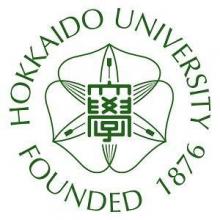
17 Oct 2016
This symposium will highlight research and education for the creation of a healthy society toward the achievement of United Nations Sustainable Development Goals (SDGs).
The lectures and discussions cover the themes including the promotion of safe water environments, hazardous material elimination, and mother-and-child health.
Researchers
Hong Kong Baptist University (HKBU)
Dr. Ken is currently an assistant professor in the department of Chemistry at HKBU. His current research interests center on advanced analytical chemistry technologies, with particular emphasis on creating and applying novel instrumental analysis technologies based on microfluidics and materials engineering.
Hiroshima University
Prof. Muneyuki Matsuo is an Assistant Professor at the Department of Chemistry, School of Science / Program of Mathematical and Life Sciences, Graduate School of Integrated Sciences for Life, Hiroshima University
Nanyang Technological University
Dr. Arun works as a Research Assistant Professor (RAP) at the Rolls-Royce@NTU Corporate Lab, Nanyang Technological University, Singapore. Through cutting-edge technology development and commercialization, he contributes to the Singapore 2030 Advanced Manufacturing Hub (AMH) and Jurong Innovation District (JID) initiatives. He also acts as an IPT-Lead of the Manufacturing Technologies programme at Rolls-Royce@NTU and leads several projects, researchers, and students.
Duke-NUS Medical School
Prof. Antonio Bertoletti's current research focuses on the development of new immunological based therapies (TCR-redirected T cells, HLA-peptide specific antibodies) for the treatment of HBV and Hepatocellular carcinoma (HCC), and the characterization of human intra-sinusoidal hepatic immune system.
Duke-NUS Medical School
Dr. Anthony Tan is actively involved in clinical trials in Singapore and China to test the safety and efficacy of adoptively transferring T cells engineered against HCC with HBV integration in collaboration with Lion TCR Pte Ltd.
Osaka City University
Prof. Shigekawa's research interest includes fabrication of heterointerfaces and advanced hybrid semiconductor devices such as multijunction solar cells and heterojunction bipolar transistors using surface activated bonding and their characterization.
Lingnan University (LU)
Mr. Brian Katona is an engineer supporting the technical aspects of the Office of Service-Learning’s initiatives in Humanitarian Technology, Entrepreneurship and Social Innovation. He is interested in sharing his expertise with people to help build meaningful and impactful technological and social solutions.
Singapore University of Technology and Design
Kwan Hui Lim is an Assistant Professor at the Information Systems Technology and Design Pillar, Singapore University of Technology and Design, and leads the Social and Urban Analytics Lab. He is a recipient of the 2016 Google PhD Fellowship in Machine Learning. His research interests are in Data Mining, Machine Learning, Artificial Intelligence, Social Network Analysis, and Social Computing.
Cl A/Prof Goh Bee Tin is Head and Senior Consultant in the Department of Oral and Maxillofacial Surgery (OMS), Research Director and Deputy Director (Research and Education) at the National Dental Centre of Singapore (NDCS)Education. Her research interests include bone tissue engineering and mandibular reconstruction.
Lingnan University (LU)
Prof. Maggie Lau has an extensive research and teaching experience in development and policy studies, poverty and social exclusion, children and youth well-being.
City University of Hong Kong (CityU)
Dr. Zhu Pingan is currently an Assistant Professor at the Department of Mechanical Engineering of City University Hong Kong.
City University of Hong Kong (CityU)
Prof. Wang Zuankai is currently a Professor in the Department of Mechanical Engineering and Associate Dean (Internationalization & Industry Engagement) of College of Engineering at the City University of Hong Kong. His work on the invention of the most water repellent surface has been included in the Guinness Book of World Records.
City University of Hong Kong (CityU)
Dr. Ma’s research mainly focuses on electronic structure of topological materials, superconductivity, low-dimensional materials, and correlated materials using Angle Resolved Photoemission Spectroscopy (ARPES).
Jae Youn Hwang is currently an Associate Professor at Daegu Gyeongbuk Institute of Science & Technology
He is currently an assistant researcher in Jilin University. His research focuses on functional surfaces, bioinspired antifouling coatings, and medical antifouling materials.
Prasanna Lakmal is a lecturer at the Department for Commerce & Financial Management of the University of Kelaniya, Sri Lanka.
Assistant Professor of Environmental Science
Krishna Institute of Allied Sciences
Krishna Institute of Medical Sciences
Deemed To Be University, Karad
Monash University
Dr Yap is currently a senior lecturer and course coordinator for the Bachelor of Medical Bioscience at Monash University Malaysia. She is dedicated to toxin pharmacology and toxicology research. She has strong background in biomolecular modelling, proteomics, immunological and molecular pharmacology of bioactive toxins. She leads the Toxin Pharmacology Research Group. Her research group now focuses on molecular mechanisms of cytotoxin with the ultimate goal of developing next-generation biotherapeutics. Her research works have been featured in prominent media outlets, including the International Snakebite Awareness Day campaign. Besides active in research, she is also an education innovator who adopts various active learning strategies with technology. She teaches undergraduate units with an emphasis on student-cantered learning using the andragogy approach. Dr Michelle enjoys promoting STEM education to the public. She has organized and hosted several workshops and forums to advance the disciplines in medical sciences through research and education.
Carla Portugal is currently an Assistant Researcher at LAQV-Requimte, NOVA.iD.FCT and is experienced in the development, implementation and monitoring of membrane based processes.
Frederico Castelo Ferreira's current research interest balances between fundamental and applied research, with potential translation into the market of sustainable products and processes.
International Islamic University Malaysia (IIUM)
Dr. Tengku Haziyamin Tengku Abdul Hamid's recent discovery of a novel strain has enabled a new patent to be drafted and was awarded gold medal in Malaysian Technology Expo 2021 for his new probiotic prototype called ProAquaVcare.
Dr. Eng. Hafsa Jamshaid C Text FTI is working as Associate Professor at National Textile University. She is an experienced textile professional in the field of weaving, knitting technologies for technical fabrics and composites.
Dr. Mohammed N. Abdulrazaq is currently an Assoc. Prof. at Department of Engineering & Technology, Management & Science University (MSU), Malaysia.
National Institute for Materials Science (NIMS)
Ken-ichi Uchida is a group leader in the Spin Caloritronics Group, Research Center for Magnetic and Spintronic Materials under the National Institute for Materials Science (NIMS), Japan
Universiti Malaysia Sabah
Dr. Connie Cassy Ompok is an early childhood education expert and a Senior Lecturer at the Faculty of Psychology and Education, Universiti Malaysia Sabah. She Started her career in Early Childhood Education as a preschool teacher (2004-2007), a lecturer in early childhood education at the Malaysian Institute of Teacher Education (2008-2016) before serving as a Senior Lecturer in Early Childhood Education at UMS (2016 until now).
Earth-Life Science Institute (ELSI), Tokyo Institute of Technology
Mayuko Nakagawa is a biochemist at Earth-Life Science Institute (ELSI) based at the Tokyo Institute of Technology, Japan.
Earth-Life Science Institute (ELSI), Tokyo Institute of Technology
Tomohiro Mochizuki is a specially-appointed assistant professor at Earth-Life Science Institute (ELSI) - Tokyo Institute of Technology.
Earth-Life Science Institute (ELSI), Tokyo Institute of Technology
Tony Z. Jia is a researcher at Japan’s Earth-Life Science Institute (ELSI), based at the Tokyo Institute of Technology. His research focuses on astrobiology, prebiotic chemistry, and origins of life.
A Tenured Professor at the Institute of Space Technology (Pakistan), Dr. Shabbir is working on Polymer based Nanomaterials for water treatment, food safety, nano-drug delivery systems, solar cells and carbon dioxide capture.
I do research on dysmennorrhoea and gender-based violence. I am a pioneer in registered clinical trials on indigenous and Ayurveda medicines in Sri Lanka. I have approval for a herbal preparation, for COVID patients.
Giants in history
Turkish astrophysicist Dilhan Eryurt (29 November 1926 – 13 September 2012) conducted research on how the sun affects environmental conditions on the moon.
Chinese biochemist Chi Che Wang (1894 - 1979), one of the first Chinese women to study abroad, advanced to prominent research positions at American institutions including the University of Chicago and the Northwestern University Medical School.
Ruby Sakae Hirose (1904 – 1960) was a Japanese-American scientist whose research contributed significantly to our understanding of blood clotting, allergies and cancer.
Chinese electron microscopy specialist Li Fanghua (6 January 1932 – 24 January 2020) facilitated the high-resolution imaging of crystal structures by eliminating interference.
Sálim Moizuddin Abdul Ali (12 November 1896 – 20 June 1987), commonly referred to as the Birdman of India, was the first person to conduct systematic surveys of birds from across India.
Haisako Koyama (1916 – 1997) was a Japanese solar observer whose dedication to recording sunspots – cooler parts of the sun’s surface that appear dark – produced a sunspot record of historic importance.
Michiaki Takahashi (17 February 1928 – 16 December 2013) was a Japanese virologist who developed the first chickenpox vaccine.
Toshiko Yuasa (11 December 1909 – 1 February 1980) was the first Japanese female physicist whose research on radioactivity shed light on beta decay – the process in which an atom emits a beta particle (electron) and turns into a different element.
Angelita Castro Kelly (1942-2015) was the first female Mission Operations Manager (MOM) of NASA. She spearheaded and supervised the Earth Observing System missions during its developmental stage.
Malaysia’s first astrophysicist, Mazlan binti Othman (born 11 December 1951) was instrumental in launching the country’s first microsatellite, and in sending Malaysia’s first astronaut, Sheikh Muszaphar Shukor, into space.
Known as Mr. Natural Rubber, chemist and researcher B. C. Shekhar (17 November 1929 – 6 September 2006) introduced a number of technical innovations that helped put Malaysia’s natural rubber industry on the world map.
Shinichiro Tomonaga (31 March 1906 – 8 July 1979), together with Richard Feynman and Julian Schwinger, was awarded the Nobel Prize in Physics in 1965, for their contributions to advance the field of quantum electrodynamics. Tomonaga was also a strong proponent of peace, who actively campaigned against the proliferation of nuclear weapons and promoted the peaceful use of nuclear energy.
South Korean theoretical physicist Daniel Chonghan Hong (3 March 1956 – 6 July 2002) achieved fame in the public sphere through his research into the physics of popcorn.
Japanese chemist Kenichi Fukui (4 October 1918 – 9 January 1998) was the first Asian scientist to be awarded the Nobel Prize in Chemistry. Together with Roald Hoffman, he received this honour in 1981 for his independent research into the mechanisms of chemical reactions.
Chinese palaeontologist, archaeologist and anthropologist Pei Wenzhong (January 19, 1904 – September 18, 1982) is regarded as a founder of Chinese anthropology.
Physicist Narinder Singh Kapany (31 October 1926 – 4 December 2020) pioneered the use of optical fibres to transmit images, and founded several optical technology companies. Born in Punjab, India, he worked at a local optical instruments factory before moving to London for PhD studies at Imperial College. There, he devised a flexible fibrescope to convey images along bundles of glass fibres.
Japanese physicist Ukichiro Nakaya (1900-1962) made the world’s first artificial snowflakes. He started his research on snow crystals in the early 1930s at Hokkaido University, where there is an unlimited supply of natural snow in winter. By taking over 3,000 photographs, he established a classification of natural snow crystals and described their relationship with weather conditions.
The field of solid-state ionics originated in Europe, but Takehiko Takahashi of Nagoya University in Japan was the first to coin the term ‘solid ionics’ in 1967. ‘Solid-state ionics’ first appeared in 1971 in another of his papers, and was likely a play on ‘solid-state electronics’, another rapidly growing field at the time.
Charles Kuen Kao (Nov. 4, 1933 to Sept. 23, 2018) was an engineer who is regarded as the father of fibre optics. His work in the 1960s on long distance signal transmission using very pure glass fibres revolutionized telecommunications, enabling innovations such as the Internet.
Chika Kuroda (24 March 1884 – 8 November 1968) was a Japanese chemist whose research focussed on the structures of natural pigments.
Motoo Kimura (13 November 1924 – 13 November 1994) was a Japanese theoretical population geneticist who is best remembered for developing the neutral theory of molecular evolution.
Meghnad Saha (6 October 1893 – 16 February 1956) was an Indian astrophysicist best known for formulating the Saha ionization equation which describes the chemical and physical properties of stars.
Sir Jagadish Chandra Bose (30 November 1858 – 23 November 1937) was a scientist and inventor who contributed to a wide range of scientific fields such as physics, botany and biology.
Osamu Shimomura (27 August 1928 – 19 October 2018) was a Japanese organic chemist and marine biologist who dedicated his career to understanding how organisms emitted light.
Subrahmanyan Chandrasekhar (19 October 1910 – 21 August 1995) was an Indian astrophysicist who studied the structure and evolution of stars.
Joo-myung Seok (November 13, 1908 – October 6, 1950) was a Korean butterfly entomologist who made important contributions to the taxonomy of the native butterfly species in Korea.
Mathematician Maryam Mirzakhani (12 May 1977 – 14 July 2017) was the first and only woman and Iranian to date to win the Fields Medal in 2014 for her work on curved surfaces.
Sir Chandrasekhara Venkata Raman (7 November 1888 – 21 November 1970) was an Indian physicist who performed ground-breaking research in the field of light-scattering.
Mohammad Abdus Salam (29 January 1926 – 21 November 1996) was a theoretical physicist and the first Pakistani to receive a Nobel Prize in science.
Srinivasa Ramanujan (22 December 1887 – 26 April 1920) was a math prodigy and widely considered one of India’s greatest mathematicians. Despite having almost no formal training in mathematics, he made substantial contributions to mathematical analysis, number theory, infinite series and continued fractions.
Gopalasamudram Narayanan Ramachandran (8 October 1922 – 7 April 2001) is best known for developing the Ramachandran plot to understand the structure of short chains of amino acids, known as peptides.
Hitoshi Kihara (1893 – 1986) was one of the most famous Japanese geneticists of the 20th century. One of his most significant contributions was identifying sex chromosomes (X and Y) in flowering plants.
Chien-Shiung Wu (31 May 1912 – 16 February 1997) was an experimental physicist who made several important contributions to nuclear physics. Wu worked on the Manhattan Project – a top-secret program for the production of nuclear weapons during World War II and helped to develop a process for separating uranium into U235 and U238.
Meemann Chang (born 17 April 1936) is a Chinese palaeontologist who studied the fossils of ancient fish to understand the evolution of life. By examining fossils, she uncovered new insights on how vertebrates, animals with a backbone, migrated from the sea and became adapted to live on land.
Bibha Chowdhuri (1913 – 2 June 1991) was an Indian physicist who researched on particle physics and cosmic rays. In 1936, she was the only female to complete a M.Sc. degree at the University of Calcutta.
Lin Lanying (7 February 1918 – 4 March 2003) was a Chinese material engineer remembered for her contributions to the field of semiconductor and aerospace materials. Lanying was born into a family who did not believe in educating girls and she was not allowed to go to school.
Japanese geochemist Katsuko Saruhashi developed the first method and tools for measuring carbon dioxide in seawater


